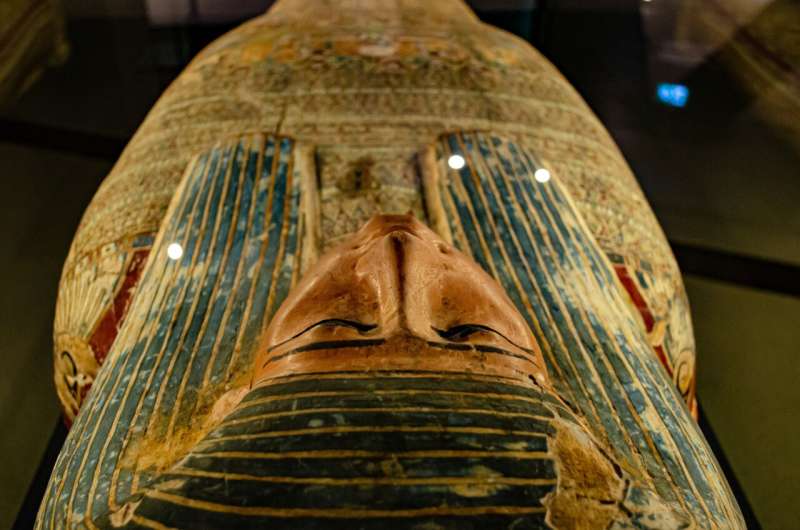Researchers from the Francis Crick Institute and Liverpool John Moores University have successfully extracted and sequenced the oldest Egyptian DNA to date. The DNA belongs to an individual who lived approximately 4,500 to 4,800 years ago, during the era of the first pyramids. This groundbreaking study, published in Nature, marks the first complete genome sequencing from ancient Egypt.
The study’s significance lies in its contribution to understanding the genetic ancestry of ancient Egyptians. The DNA was extracted from a tooth found in Nuwayrat, a village 265 kilometers south of Cairo. This individual lived during the overlap of the Early Dynastic and Old Kingdom periods and was buried in a ceramic pot, a practice before artificial mummification became standard.
Technological Advances in DNA Sequencing
Forty years after Nobel laureate Svante Pääbo’s initial attempts to extract DNA from ancient Egyptian remains, advancements in technology have finally made it possible to sequence a complete genome. The warm climate of Egypt has historically hindered DNA preservation, making this achievement particularly noteworthy.
The research team discovered that the majority of the individual’s ancestry was linked to ancient North Africans, while about 20% traced back to the Fertile Crescent, an area that includes modern-day Iraq, Iran, and Jordan. This genetic evidence supports previous archaeological findings of cultural exchanges between Egypt and the Fertile Crescent, known for its early developments in agriculture and urbanization.
Insights into Ancient Egyptian Life
By analyzing the individual’s genetic code, alongside chemical signals in his teeth, researchers inferred that he likely grew up in Egypt. His skeletal remains provided further insights into his lifestyle. Muscle markings suggested he might have worked as a potter or in a similar trade, requiring prolonged sitting with outstretched limbs.
“Piecing together all the clues from this individual’s DNA, bones, and teeth has allowed us to build a comprehensive picture,” said Adeline Morez Jacobs, a visiting research fellow and former Ph.D. student at Liverpool John Moores University. “We hope that future DNA samples from ancient Egypt can expand on when precisely this movement from West Asia started.”
Historical Context and Future Research
The individual’s remains have a storied history. Excavated in 1902 by a committee led by John Garstang, the burial was initially housed at the Liverpool Institute of Archaeology before being transferred to World Museum Liverpool. Remarkably, the remains survived bombings during the Blitz that destroyed much of the museum’s collection.
Linus Girdland Flink, a lecturer in ancient biomolecules at the University of Aberdeen, noted the significance of the findings: “This individual has been on an extraordinary journey. He lived and died during a critical period of change in ancient Egypt, and his skeleton was excavated in 1902 and donated to World Museum Liverpool, where it then survived bombings during the Blitz that destroyed most of the human remains in their collection.”
The research team, including Pontus Skoglund, group leader of the Ancient Genomics Laboratory at the Crick, emphasized the importance of these findings. “Building on this past research, new and powerful genetic techniques have allowed us to cross these technical boundaries and rule out contaminating DNA, providing the first genetic evidence for potential movements of people in Egypt at this time,” Skoglund stated.
Implications and Future Directions
Joel Irish, a professor of anthropology and archaeology at Liverpool John Moores University, added, “The markings on the skeleton are clues to the individual’s life and lifestyle—his seat bones are expanded in size, his arms showed evidence of extensive movement back and forth, and there’s substantial arthritis in just the right foot. Though circumstantial, these clues point towards pottery, including the use of a pottery wheel, which arrived in Egypt around the same time.”
The study opens new avenues for understanding the genetic history of ancient Egypt and the broader region. The researchers aim to collaborate with Egyptian scholars to further explore migration patterns and ancestry, potentially uncovering more about the cultural and genetic exchanges that shaped ancient civilizations.
For more information, readers are encouraged to refer to the original study: Morez Jacobs, A. et al. Whole-genome ancestry of an Old Kingdom Egyptian. Nature. (2025) DOI: 10.1038/s41586-025-09195-5.
